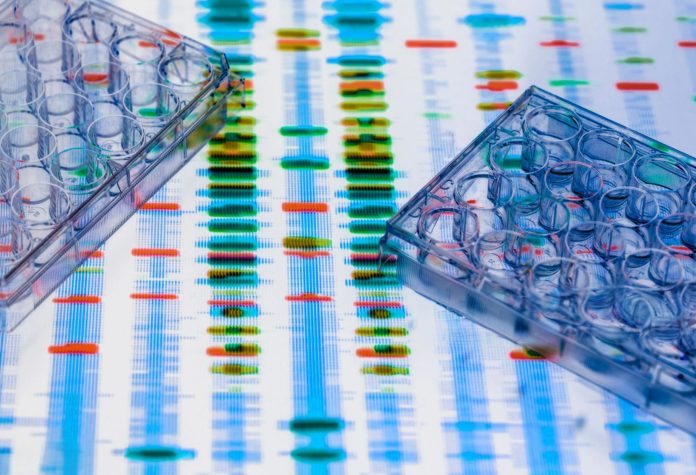In this review, Brian Tait, Chief Scientific Officer, Haplomic Technologies Pty Ltd, examines critical aspects of cancer genetic research, emphasising genes that may benefit from single-chromosome sequencing
The field of cancer genetic research is one of the most researched areas in the modern era. In some cancers, a single SNP (single nucleotide polymorphism) is found in a gene, in which case single chromosome sequencing is not required, nor necessary. I am not attempting in this short review to give a comprehensive account of the gene mutations involved in the development of human cancer, but rather to focus on those genes that may benefit from single chromosome sequencing to accurately identify alleles.
BRCA1 and BRCA2 genes
BRCA1 and BRCA2 genes are tumour suppressor genes which play an important role in DNA repair, preventing mutation and the development of cancers. These are comparatively long genes. BRCA1 is found on chromosome 17 at position 17q21.31. It is approximately 81 kb long and has 24 exons. The mRNA coding sequence is 7.2 kb long and codes for 1,863 amino acids. By comparison, BRCA2 is found on chromosome 13 at position 13q13.1. It has a total length of 84 kb and has 27 exons, with an mRNA coding sequence of 10.2 kb, resulting in 3,418 amino acids. Changes in the DNA sequence of these genes can have a profound impact on their role as tumour suppressor genes.
Polymorphism of BRCA1 and BRCA2 genes
There are hundreds of polymorphisms reported for both BRCA genes, including indels (insertions/deletions), resulting in frame shift mutation, nonsense mutations, splice site mutations and single nucleotide polymorphism. Large genomic rearrangements have also been described. There are deletions or insertions which can cover several exons. Many of these polymorphisms result in loss of function of the protein, which in turn results in susceptibility to breast and ovarian cancer.
Single chromosome sequencing for BRCA1 and BRCA2
Until recently, Sanger sequencing was considered the gold standard for documenting BRCA1 and BRCA2 gene mutations. In recent years, NGS (next-generation sequencing) has revolutionised the field and provided more information in terms of allele assignments due to the extended length of the DNA, which can be sequenced with NGS.
Nicolussi and co-workers from the University of Roma described their protocol in 2019. (1) They compared the Ion Torrent PGM platform with the Ion Torrent AmpliSeq BRCA1 and BRCA2 kit, which relies on conventional sequencing. The segment of the gene they sequenced with NGS was the coding part plus 10-20bp of intronic sequence. This comprised primers resulting in 167 amplicons. By including the intronic sequences of each boundary, they were able to detect splice variation. However, deep intron variation is not detected by this method.
Although most of these variations will have no impact on the normal functioning of these genes, they may be in positions which affect expression, and they certainly contribute to the allele definition. The use of single chromosome sequencing, including the intronic variations, permits the accurate definition of alleles with no limitations on the total amount of DNA to be sequenced.
Other genes involved in susceptibility to breast cancer
In addition to the BRCA and other known polymorphic genes, the Spanish Society for Medical Oncology and the Spanish Society of Pathology issued a statement in 2024 (2) which outlines recommendations for biomarker testing of diagnosed breast cancer patients in both early and more advanced stages, in order to guide treatment.
Firstly, histological type is established according to WHO criteria. The mitotic count is performed at the edge of the tumour to indicate how fast the tumour is growing. As for the biomarkers, it is recommended that estrogen (ER) alpha and progesterone (PR) receptors be measured for their presence in all stages of first diagnosis.
Approximately 70% of breast cancer patients express ER, and it is a good prognostic sign. It predicts a favourable response to hormone therapy. Approximately 60% of breast cancer patients express the PR receptor, and there is a good correlation between the expression of ER-alpha and the PR receptor.
The ER alpha gene is very polymorphic, as is the R gene. It is coded for by the ESR1 gene on the long arm of chromosome 6 (6q 24-27) and is the driver of tumour growth in breast cancer. The binding of estrogen to the alpha receptor of the ESR alpha gene causes the activation of transcriptional factors and initiation of transcription of several genes involved in cell replication.
ESR–alpha appears to have a crucial role in breast cancer development; it is associated with increased estrogen production, which appears essential for the development of the disease. Most of the biomarker associations reported are with ESR1.
Human Epidermal Growth Factor Receptor 1 and 2 (HER-1 and 2)
As the name implies, HER-1 and 2 are receptors for epidermal growth factors (the growth factors are extracellular ligands and members of the EGF family). HER-1 is found on the short arm of chromosome 7 (p11.2) (ERBB1 Gene). Overexpression of HER-1 is associated with several cancers.
The HER-2 gene is found on the long arm of chromosome 17(17q12) (ERBB2 GENE). Overexpression of HER-2 is associated with the development of breast cancer and gastric cancer. Interestingly, the increase in expression of HER-2 is not associated with ligand binding but is due to homodimerization and heterodimerization with other HER proteins.
Approximately 30% of breast cancer patients are HER-2 positive with high levels of HER-2, which makes them a prime target for intervention. Herceptin is a monoclonal antibody (trastuzumab), hence the name for the receptor (HER). The monoclonal is used for blocking the receptor and competing for binding with the epidermal growth factor. The cancer with the lowest survival is the triple negative variety (TNBC), i.e negative for the receptors for estrogen (ESR), progesterone (PR), and HER-2.
The absence of these receptors does not permit the use of hormonal or monoclonal treatment in the case of HER-2+ patients. TNBC accounts for approximately 15% of breast cancer patients and is more prevalent in women under 40 years of age at diagnosis.
The examination of the presence of ESR1, PR and HER- status of patients (along with the BRCA biomarkers) helps in determining the course of treatment, i.e. hormonal, monoclonal antibody or chemotherapy.
The polymorphism of the ESR1 and PR genes, along with the HER-2 gene, relies on linkage disequilibrium to define the alleles. Many of the polymorphisms described to date are copy number variations (often somatic changes), along with individual SNPs and mutations in coding and noncoding regions, some of which have been shown to affect expression.
Until single chromosome sequencing establishes the precise alleles, we will not be in a position to fully appreciate how these changes to the sequence of these genes impact the binding of hormones and monoclonal antibodies.
The other problem facing this area of research is that many studies are confined to one ethnic group, with confirmation of some previous work and different results for others. This is not surprising and will not be clarified until the alleles are definitively defined in the various ethnic groups.
I have restricted these comments to the aforementioned markers and genes. There are, of course, many other genes involved in the development of cancers.
Multiple genes are involved in a range of human cancers
In a recent review, Musalula Sinkala from the University of Zambia in Lusaka studied many human cancers and showed that the same genes were involved in causing many cancers. They comprise tumor ‘suppressor, oncogenes, transcription factor genes, kinase, cell surface receptors and phosphatase genes. Some of the mutations described are somatic changes, and some are germline.
She studied the 727 genes from the Catalogue of Somatic Mutations in Cancer (COSMIC) and the Cancer Gene Consensus CGC) databases. The meta-analysis involved 138 results in 41 cancers, and Sinkala noted that mutations occurred at a rate from 0% to 94% (for the TP53 gene in small cell lung cancer). 98% of the genes (719/727) were mutated in at least one sample.
The oncogenes (89%, including MU16, PIK3CA and KRAS) and the tumour suppressor genes (91%, including TP53, CSMD3, and LRP1D) had the highest rate of mutations, followed by transcription factors (72%), kinases (62%), receptors (60%) and phosphatases (19%).
Although the results indicate that these genes are restricted to one cancer, they have two factors in common. Firstly, they have all demonstrated polymorphism in human cancer (either somatic or germline) and secondly, alleles have not been definitively defined, and a common nomenclature has not been adopted. It would be easier if the alleles were defined and the reader could look at allelic associations with individual cancers. Single chromosome sequencing can assist in making this happen.
miRNA molecules in human cancer
There is a plethora of papers identifying and examining how miRNA molecules control the post-transcriptional expression of genes, which are drivers of human cancer. For a review of how these molecules can help in the fight against human cancer, see Zhang et al and Zhao et al (4,5).
Needless to say, there is not much known about the polymorphism of miRNA molecules in human cancer and how this may affect their function. Single chromosome sequencing has a role to play in determining the miRNA alleles and the alleles of the human genetic cancer drivers. There is much still to be done in this exciting area of research.
References
1.Nicolussi A et al.2019 PeerJ 7:e6661 DOI 10.7717
2.Colomer, P. et al. 2024 Clinical and Translational Oncology. 26:2935–2951
https://doi.org/10.1007/s12094-024-03541-1
3.Sinkala, M. 2023 Scientific Reports 13:12742
https://doi.org/10.1038/s41598-023-39608-2
- Zhang Z. et al,2022 Frontiers in Immunology 12, article 807895
https://www.frontiersin.org/journals/immunology/articles/10.3389/fimmu.2021.807895/full
- Zhao Y, etal 2022 Essays Biochem. 16;66(4): 345-358.
doi: 10.1042/EBC20220007. PMID: 35996948.








